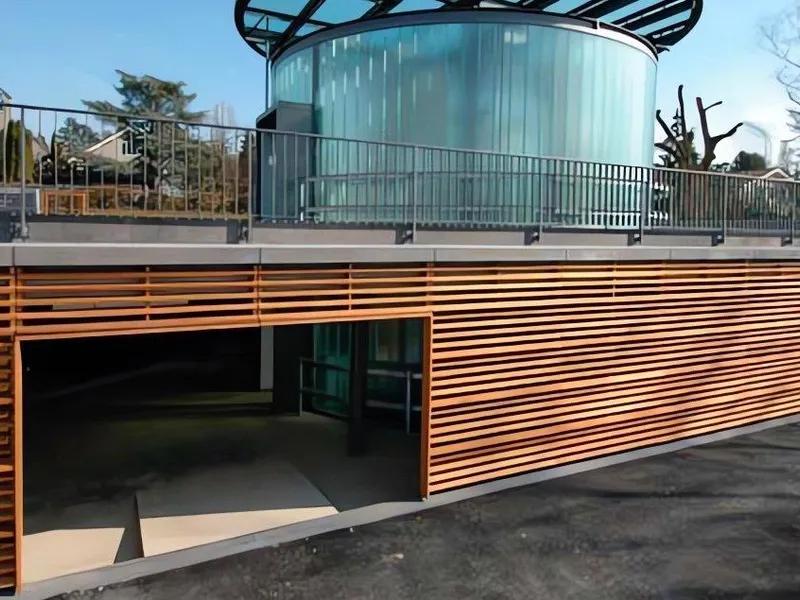Les Rayes Public Car Park Construction
Beskrivelse: Les Rayes public car park in Vésenaz, commissioned by Collonge-Bellerive, features 201 parking spaces, a transformer station, sorting facility, multi-purpose area, and panoramic lift. Les mer ↧
Verdi og størrelse

Miljøsertifiseringer
Ingen registrerte

Brannkonsept
Ingen registrerte
Hva skal bygges?
Antall bygninger |
1 stk |
Antall parkeringsplasser |
201 stk |
Aktører
 Byggherre: Municipality of Collonge-Bellerive
Byggherre: Municipality of Collonge-Bellerive
 Arkitekt: Pierre Ambrosetti & Olivier Vallat Architectes - Genève
Arkitekt: Pierre Ambrosetti & Olivier Vallat Architectes - Genève
 Rådgivende ingeniør
Rådgivende ingeniør
 Underentreprenør
Underentreprenør
Klikk på aktørene for å se kontakter
Fase: Ferdig bygd
Selskaper og personer
Det er 4 selskaper koblet til dette prosjektet.
Lag en bruker eller logg inn for se navn, telefonnummer og e-post adresse til selskapene og kontaktpersonene (f.eks. prosjektleder hos entreprenørene).
Bilder
Oppdateringer
21. Mar 2025
- Byggestart lagt til: JUNE 2003
- Pierre Ambrosetti lagt til som Hovedsamarbeider for Municipality of Collonge-Bellerive
- Implenia lagt til som Entreprenør
- Municipality of Collonge-Bellerive lagt til som Byggherre
- Geneva's Public Utility Company lagt til som Leverandør av byggevarer
- Pierre Ambrosetti & Olivier Vallat Architectes - Genève lagt til som Arkitekt
Byggekamera
Har dette prosjektet et byggekamera?
Send oss en link på olav@pekeberg.com,
så legger vi det til her.


 BuildPilot
BuildPilot











